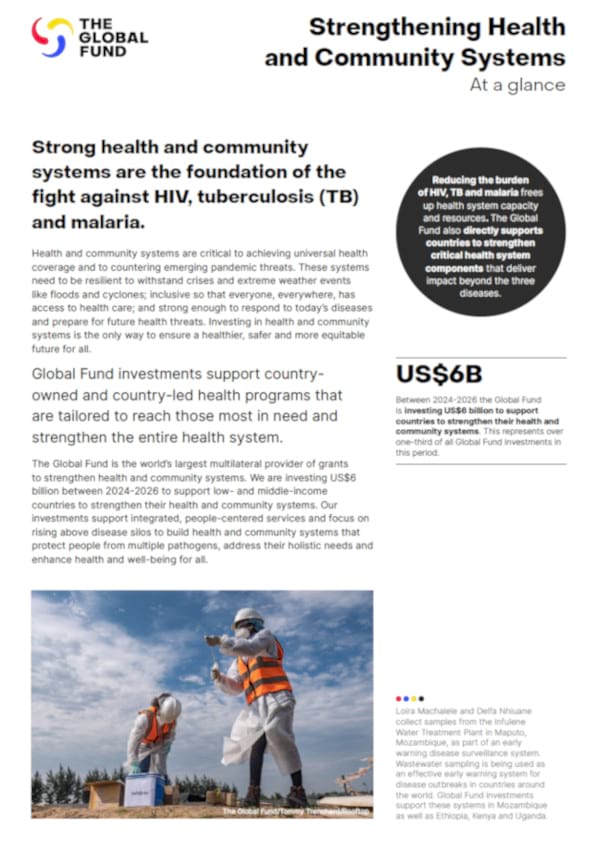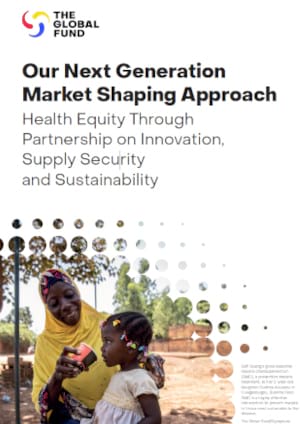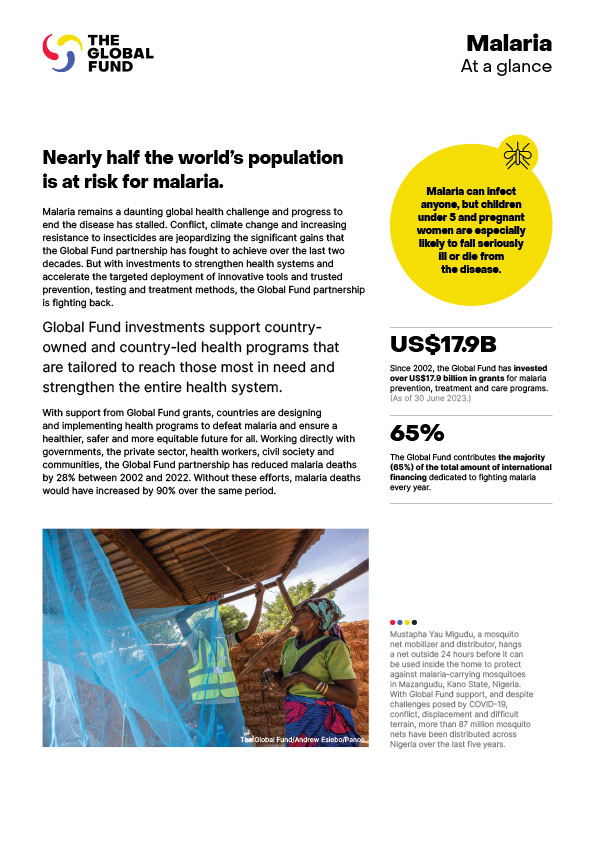Monitoring and evaluation are a critical part of the implementation of grants, and are necessary to have impact against AIDS, TB and malaria and support resilient and sustainable health systems. There are a number of ways in which monitoring and evaluation systems can be made more robust, including:
- Investing in monitoring and evaluation
- System assessments
- Program reviews
Investing in Monitoring and Evaluation
National health sector and disease programs require data for program planning, program management and assessing progress. Data collection systems and data sources are needed to ensure data are available for routine monitoring and assessing impact of disease control efforts. In addition to investments in data sources and collection methods, countries should focus on the capacity to disaggregate, analyze and use data for program quality improvement and impact.
To ensure the best use of limited resources, countries need to identify a set of prioritized areas and activities to be supported by the Global Fund.
To help, we offer guidance materials and tools:
- Guidance Note on Essential Set of Data System Investments
download in English | Français - Information Note on Global Fund Investments in Mortality Analysis and Data Systems
download in English - HIV Surveillance Options for Key and Vulnerable Populations in Global Fund Grants
download in English
System Assessments
Strengthening a national monitoring and evaluation system begins with an assessment of the existing system. This is carried out by countries themselves and ideally should be done every two to three years.
System assessments serve to:
- Determine the status of the implementation of the national monitoring and evaluation plan
- Identify any weaknesses in the monitoring and evaluation system
- Build on and strengthen existing monitoring and evaluation efforts
Based on the results of the system assessment, countries will then be able to develop a costed monitoring and evaluation plan, implement it, and follow up on the implementation process.
There are a number of tools available to help countries carry out an assessment of their national monitoring and evaluation systems.
| Program component | Description | Available documents |
|---|---|---|
|
HIV |
For countries that are planning implementation of an HIV M&E assessment, it is recommended to use the UNAIDS 12-component assessment tool. This tool has been developed by UNAIDS in collaboration with partners, including the Global Fund. It was piloted in three countries, validated by the HIV Monitoring and Evaluation Reference Group (MERG) and is recommended by UNAIDS for the assessment of the HIV M&E system. |
|
|
Malaria/TB |
The monitoring and evaluation self-assessment tool developed by the Global Fund and partners enables countries to conduct a comprehensive assessment of the M&E system in the country. Malaria and TB programs are recommended to use this tool in order to assess their M&E system. |
|
|
Resilient and sustainable systems for health |
Conducting an M&E systems strengthening assessment is not required for resilient and sustainable systems for health grants. However, for programs that focus on strengthening the national health information system, the Global Fund recommends the Health Matrix Network assessment tool for system strengthening. The tool examines the integral components of a health information system and provides information on how to determine key areas of focus. |
The results of the system assessment can then support the inclusion of system strengthening activities in the monitoring and evaluation plan and be supported with funding from a Global Fund grant.
Program Reviews
A program review is a periodic assessment of an ongoing health or disease control program. These reviews are a key element of monitoring and evaluation efforts at the program level and include such questions as:
- Are the right things being done?
- Are they being done in the right way?
- Are they being done on a large enough scale?
- Are the right people being reached?
- Is the program making a difference?
Program reviews provide decision-makers an opportunity to evaluate program performance against the priorities identified in the strategic plans, review lessons learned, identify areas for further improvement and inform planning and future implementation.
An epidemiological and impact analysis should form an integral part of any program review. It also forms a core piece of information in the development of the national health or disease strategy and informs the country’s funding request to the Global Fund. This analysis allows decision-makers to assess whether proposed interventions are likely to have the desired impact, and also to identify and fill programmatic gaps that may exist in the national disease plan.
Working together, the Global Fund and the World Health Organization developed some guidelines for program reviews and impact analysis.
- Guidance for Generic Terms of Reference for Epidemiological and Impact Analysis
download in English







